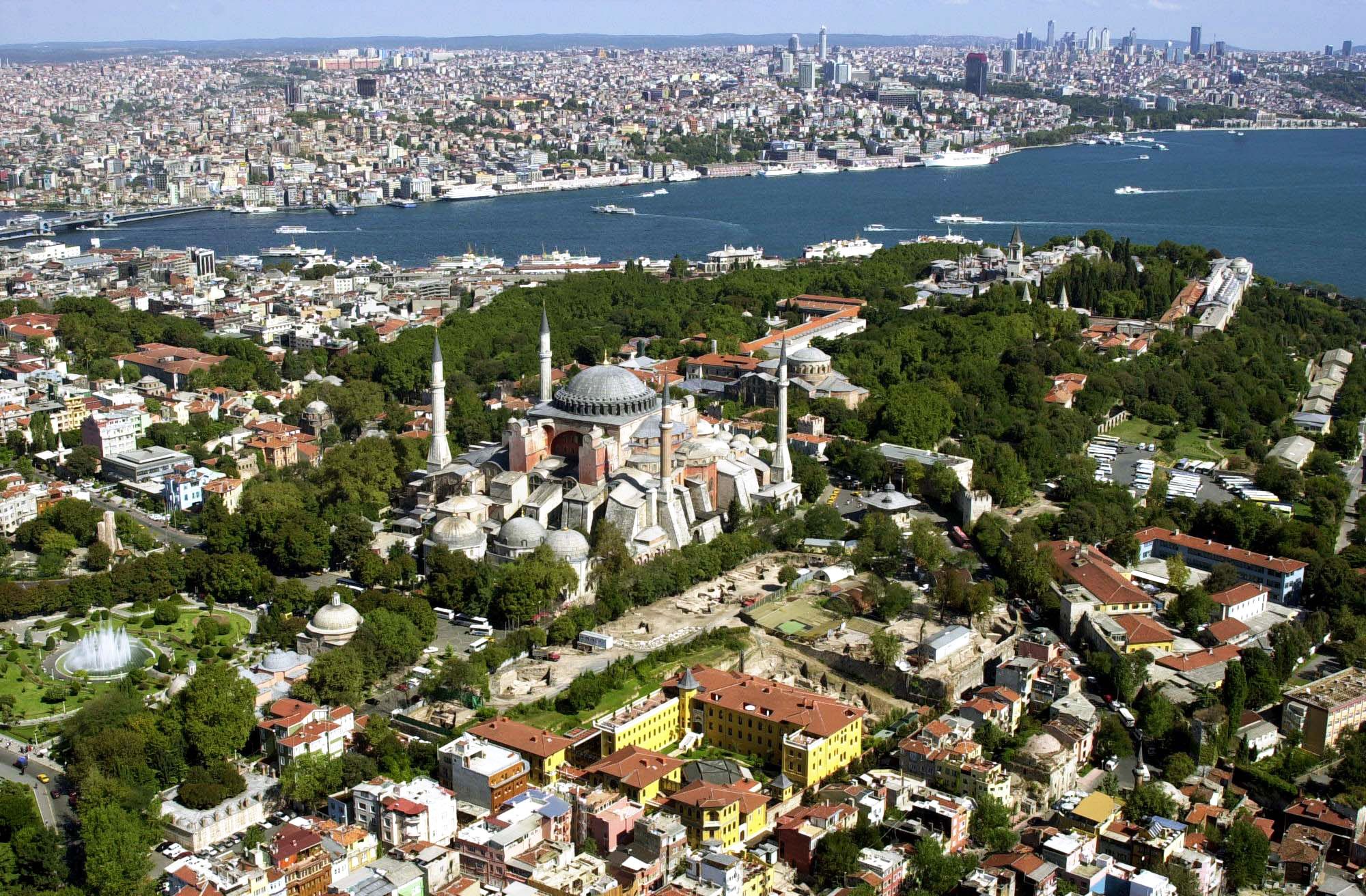
漢德百科全書 | 汉德百科全书
 Cities founded by the Romans
Cities founded by the Romans
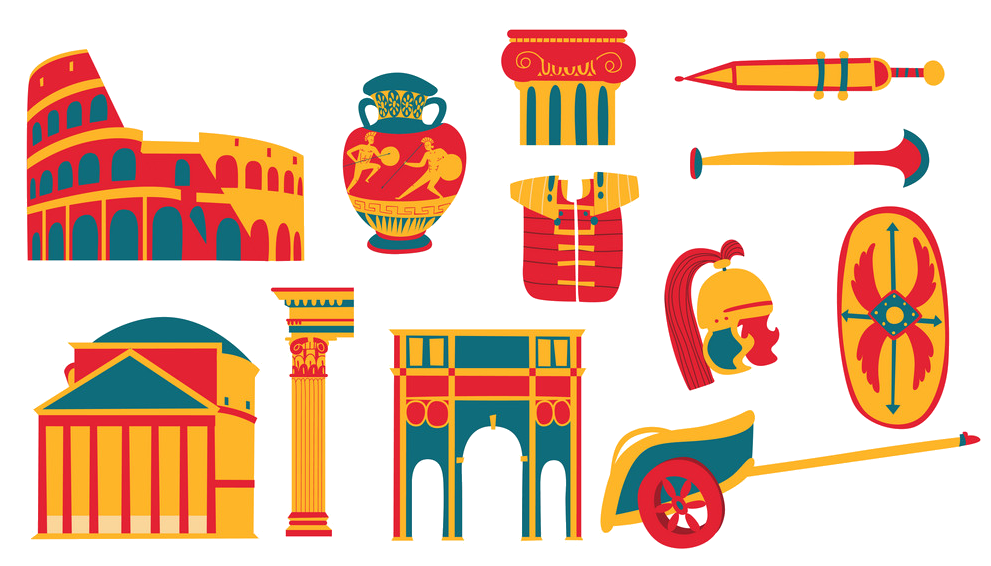

 History
History
 Italy
Italy

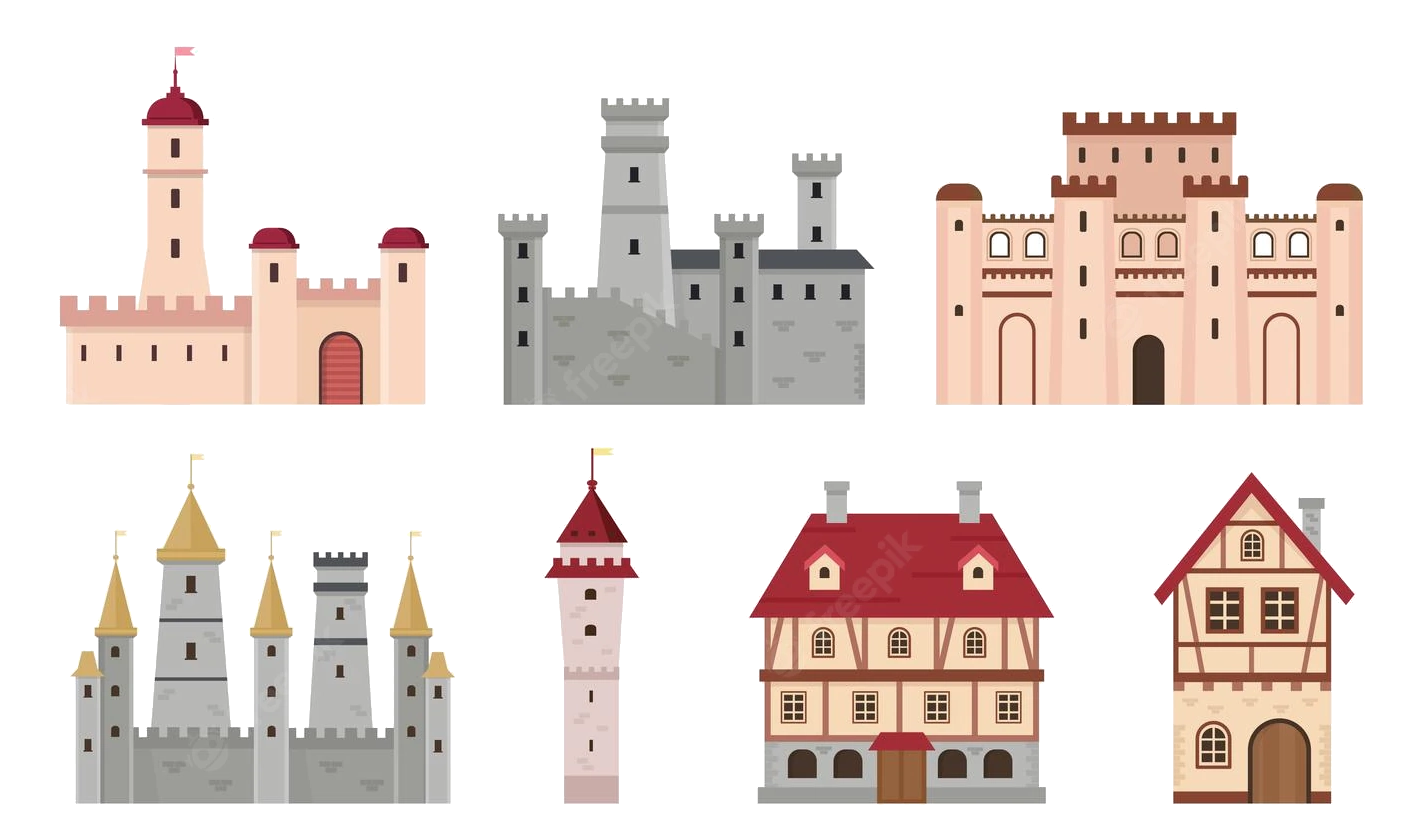 Medieval cities in Europe
Medieval cities in Europe
 Silk road
Silk road

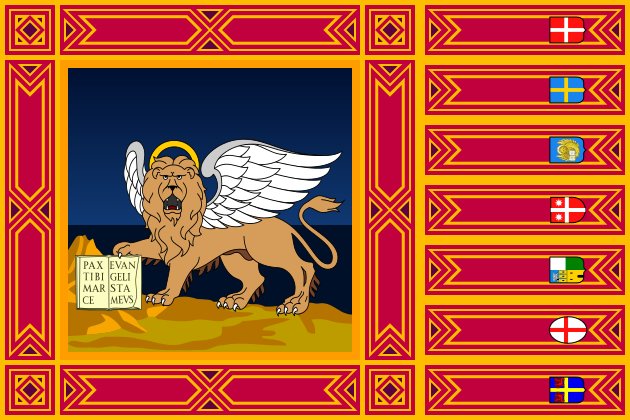 Veneto
Veneto
 Venice
Venice

 Cities founded by the Romans
Cities founded by the Romans

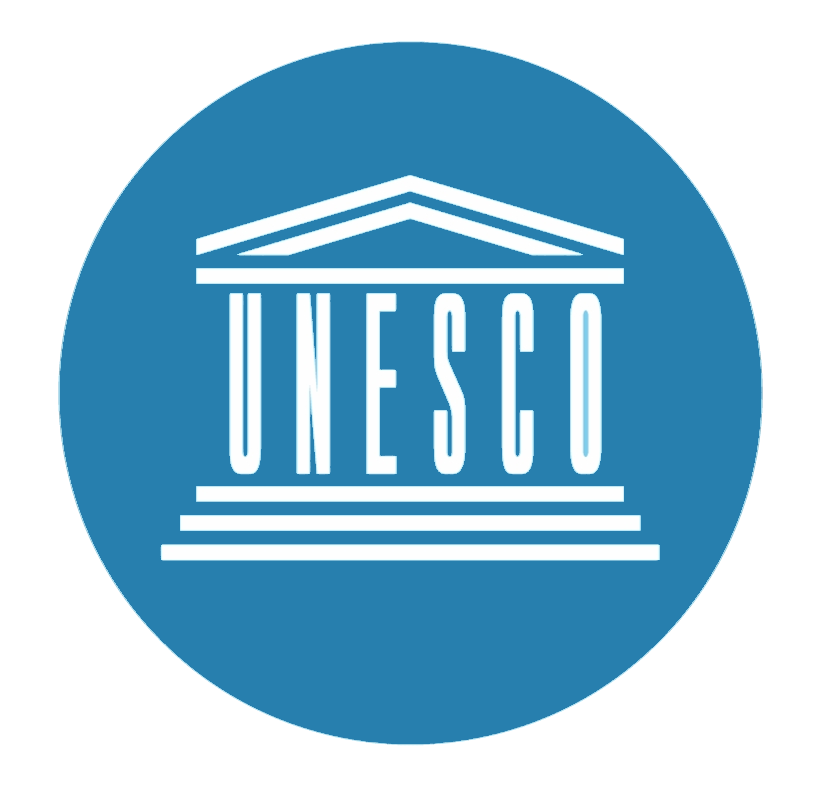 World Heritage
World Heritage

 Important port
Important port
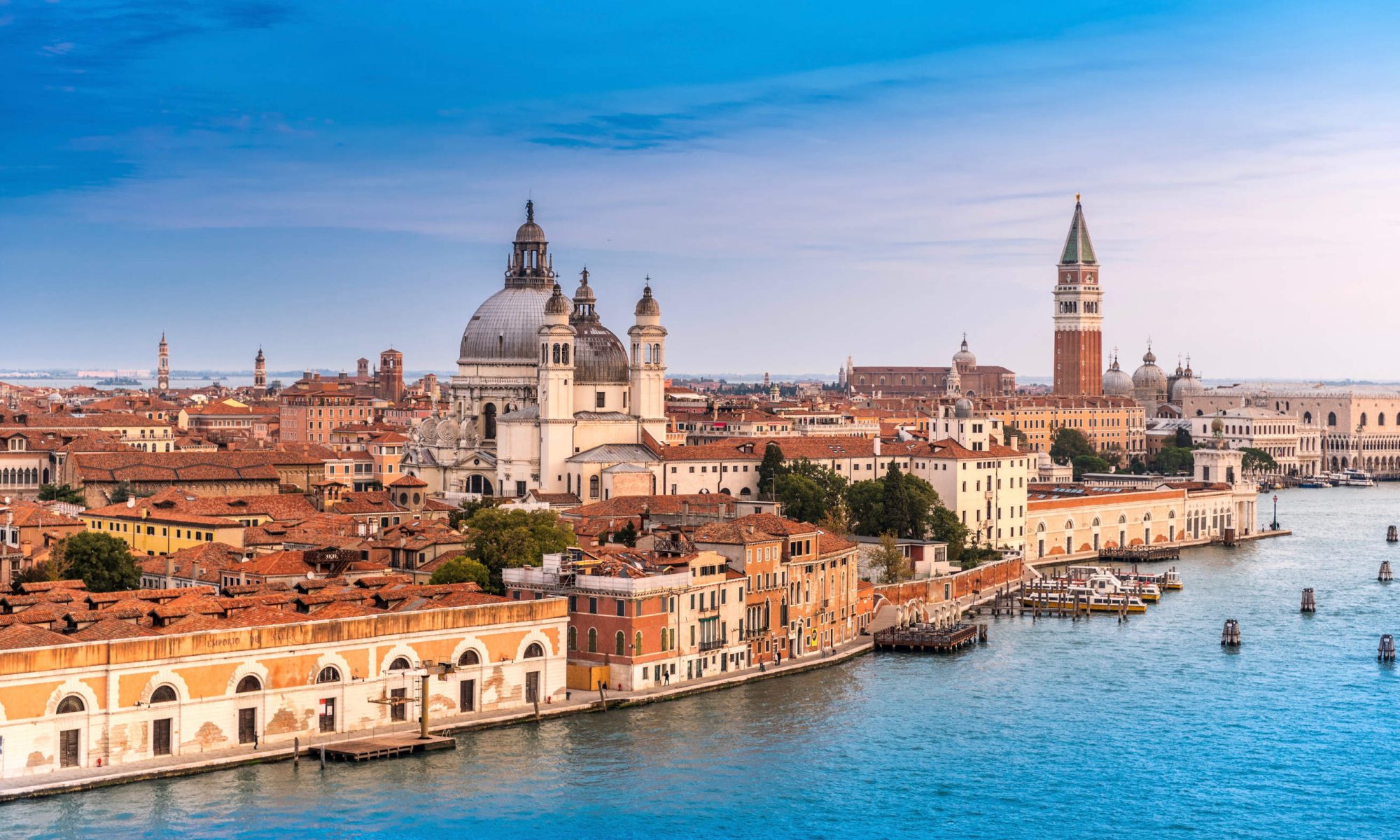
Venedig (italienisch Venezia [veˈnɛʦːi̯a], venezianisch Venesia[2] [veˈnɛzi̯a] oder [veˈnɛzja]) ist eine Stadt im Nordosten Italiens. Sie ist die Hauptstadt der Region Venetien, Metropolitanstadt Venedig und trägt den Beinamen La Serenissima („Die Durchlauchtigste“).[3] Ihr historisches Zentrum (centro storico) liegt auf einigen größeren Inseln in der Lagune von Venedig.
Die Gesamtfläche Venedigs beträgt 414,6 km², davon entfallen 257,7 km² auf Wasserflächen.[4] Am 31. Dezember 2016 zählte die Stadt 261.905 Einwohner, davon 181.883 in den Stadtteilen auf dem Festland, 58.901 im historischen Zentrum und 29.674 innerhalb der Lagune.[5] In der Lagune befinden sich 118 Inseln.[6] Sie erstreckt sich über etwa 50 km zwischen den Mündungen der Flüsse Adige (Etsch) im Süden und Piave im Norden in die Adria.
Venedig war bis 1797 Hauptstadt der Republik Venedig und mit über 180.000 Einwohnern eine der größten europäischen Städte. Bis ins 16. Jahrhundert war sie eine der größten Handelsstädte, über die der Handel zwischen Westeuropa und dem östlichen Mittelmeer abgewickelt wurde. Venedig unterhielt die meisten Handels- und Kriegsschiffe. Ihr Adel profitierte vom Handel mit Luxuswaren, Gewürzen, Salz und Weizen. Venedig entwickelte sich zum größten Finanzzentrum und dominierte ein Kolonialreich, das von Oberitalien bis Kreta und zeitweise bis nach Zypern reichte.[7] Nach französischer und österreichischer Herrschaft zwischen 1798 und 1866 wurde Venedig ein Teil Italiens. 1929 wurde der Industriekomplex Mestre-Marghera in die Comune di Venezia eingemeindet. Der jüdische Anteil der Bevölkerung wurde während des Zweiten Weltkriegs vernichtet. In den Jahren 1965 bis 1970 erreichte die Stadt mit knapp 370.000 Einwohnern die höchste Bevölkerungszahl, die seitdem wieder um etwa 100.000 Einwohner zurückgegangen ist.
Venedig und seine Lagune stehen seit 1987 auf der UNESCO-Liste des Weltkulturerbes.[8] Sie inspirierten besonders die Künstler und Venedig wurde zu einer der von Touristen meistbesuchten Städte. Seit einem Jahrhundert ist die wirtschaftliche Struktur der Altstadt einseitig auf den Tourismus ausgerichtet, während sich die industrielle Tätigkeit vor allem um Mestre und Marghera auf dem westlichen Festland konzentriert.
威尼斯(威尼斯语︰Venezsia;意大利语︰Venezia;弗留利语︰Vignesie;拉丁语︰Venetia;英文:Venice)是意大利东北部著名的旅游与工业城市,也是威尼托地区的首府。威尼斯城由被运河分隔并由桥梁相连[1]的118座小岛组成。[2]威尼斯潟湖是位于波河与皮亚韦河河口之间的一个封闭的海湾,威尼斯城就坐落在威尼斯潟湖的浅滩上。威尼斯以其优美的环境、建筑和艺术品珍藏而闻名。[1]潟湖和城市的一部分被列为世界遗产。[1]Luigi Barzini曾在纽约时报形容它“无疑是最美丽的人造都市”[3],时代线上也称赞威尼斯是欧洲最浪漫的城市之一。
2014年,共有264,579人居住在威尼斯市镇,其中约55,000人居住在老城区。威尼斯与帕多瓦和特雷维索一起,组成了帕多瓦-特雷维索-威尼斯大都市区(PATREVE),总人口260万。PATREVE只是一个统计学意义上的大都市区,不是行政区划的等级。[4]
威尼斯这个名字源于公元前十世纪居住在该地区的古威尼蒂人。[5][6]这个城市历史上曾经是威尼斯共和国的首府。威尼斯同时被誉为“主之城”、“尊贵之城”、“亚得里亚王后”、“水之都”、“面具之城”、“桥梁之城”、“漂浮之都”、“运河之城”。
威尼斯共和国是中世纪和文艺复兴时期的主要金融和海运力量,是十字军东征和勒班陀战役的集结地,也是从13世纪直到17世纪末的一个非常重要的商业(特别是丝绸,粮食和香料)和艺术中心。[7] 威尼斯市被认为是第一个真正的国际金融中心,9世纪逐渐形成,14世纪达到了顶峰。这使威尼斯在其大部分历史中成为一座极为富裕的城市。[8]后来因为土耳其人对地中海东边的控制促使欧洲国家寻找其他航线的欲望,威尼斯因此失去了大部分的重要性与影响力。
它同样因为几次特别是文艺复兴时期的重要的艺术运动而众所周知的。在拿破仑战争和维也纳会议之后,共和国被奥地利帝国所吞并,直到1866年,由于第三次意大利独立战争而举行的全民公投,威尼斯成为意大利王国的一部分。威尼斯在交响乐和歌剧音乐史上也起着重要的作用,它是安东尼奥·维瓦尔第的诞生地。[9]2016年,威尼斯被评为世界上最美丽的城市。[10]
ヴェネツィア(イタリア語: Venezia (![]() 音声ファイル)[5])は、イタリア共和国北東部に位置する都市で、その周辺地域を含む人口約26万人の基礎自治体(コムーネ)。ヴェネト州の州都、ヴェネツィア県の県都である。ヴの表記によりベネチアと表記されることもある。
音声ファイル)[5])は、イタリア共和国北東部に位置する都市で、その周辺地域を含む人口約26万人の基礎自治体(コムーネ)。ヴェネト州の州都、ヴェネツィア県の県都である。ヴの表記によりベネチアと表記されることもある。
中世にはヴェネツィア共和国の首都として栄えた都市で、「アドリア海の女王」・「水の都」・「アドリア海の真珠」[要出典]などの別名をもつ。英語では「Venice」と呼ばれ、これに由来して日本語でもヴェニス、ベニスと呼ばれることもある。
古来はラテン語でウェネティ人の土地を意味し、ウェネティ人が住んでいたアドリア海の奥に拡がる土地をウェネティア (Venetia) と呼んだことから来ている。この綴りをそのままイタリアでのラテン語の読み方に従うと、ヴェネツィア(ヴェネツャ)となる。英語でヴェニス (Venice)、フランス語でヴニーズ (Venise)、ドイツ語でヴェネーディヒ (Venedig) と呼ばれる。ヴェネツィア方言では、古語は Venexia、現代語では Venessia(まれに Venezsia)と表記され、ヴェネーシアとヴェネースィアの中間に近い音で発音される。
日本語の表記では、イタリア語から来たものでもヴェネーツィアを始めとして、ヴェネチア、ベネチア、ベネツィアなどもある。英語由来の日本語表記では、ヴェニス、ベニスなどと書かれることもある。
英語での形容詞形"Venetian"はヴィニーシャンとヴェニーシャンの中間に近い発音だが、これの日本語表記は「ヴェネチアン」または「ベネチアン」となることが多く、また、綴りは異なるがイタリア語の影響から「ヴェネツィアン」と表記されることもしばしば。
Venice (/ˈvɛnɪs/, VEN-iss; Italian: Venezia [veˈnɛttsja] ( listen); Venetian: Venesia, Venexia [veˈnɛsja]) is a city in northeastern Italy and the capital of the Veneto region. It is situated across a group of 118 small islands[1] that are separated by canals and linked by 400 bridges.[2][3] The islands are located in the shallow Venetian Lagoon, an enclosed bay that lies between the mouths of the Po and the Piave rivers (more exactly between the Brenta and the Sile). Parts of Venice are renowned for the beauty of their settings, their architecture, and artwork.[2] The lagoon and a part of the city are listed as a UNESCO World Heritage Site.[2]
listen); Venetian: Venesia, Venexia [veˈnɛsja]) is a city in northeastern Italy and the capital of the Veneto region. It is situated across a group of 118 small islands[1] that are separated by canals and linked by 400 bridges.[2][3] The islands are located in the shallow Venetian Lagoon, an enclosed bay that lies between the mouths of the Po and the Piave rivers (more exactly between the Brenta and the Sile). Parts of Venice are renowned for the beauty of their settings, their architecture, and artwork.[2] The lagoon and a part of the city are listed as a UNESCO World Heritage Site.[2]
In 2014, 264,579 people resided in Comune di Venezia, of whom around 55,000 live in the historic city of Venice (Centro storico). Together with Padua and Treviso, the city is included in the Padua-Treviso-Venice Metropolitan Area (PATREVE), with a total population of 2.6 million. PATREVE is only a statistical metropolitan area.[4]
The name is derived from the ancient Veneti people who inhabited the region by the 10th century BCE.[5][6] The city was historically the capital of the Republic of Venice. Venice has been known as the "La Dominante", "Serenissima", "Queen of the Adriatic", "City of Water", "City of Masks", "City of Bridges", "The Floating City", and "City of Canals."
The Republic of Venice was a major financial and maritime power during the Middle Ages and Renaissance, and a staging area for the Crusades and the Battle of Lepanto, as well as a very important center of commerce (especially silk, grain, and spice) and art in the 13th century up to the end of the 17th century. The city-state of Venice is considered to have been the first real international financial center which gradually emerged from the 9th century to its peak in the 14th century.[7] This made Venice a wealthy city throughout most of its history.[8]
It is also known for its several important artistic movements, especially the Renaissance period. After the Napoleonic Wars and the Congress of Vienna, the Republic was annexed by the Austrian Empire, until it became part of the Kingdom of Italy in 1866, following a referendum held as a result of the Third Italian War of Independence. Venice has played an important role in the history of symphonic and operatic music, and it is the birthplace of Antonio Vivaldi.[9] Venice has been ranked the most beautiful city in the world as of 2016.[10] The city is facing some major challenges, however, including financial difficulties, erosion, pollution, subsidence, an excessive number of tourists in peak periods and problems caused by oversized cruise ships sailing close to the banks of the historical city.[11][12][13]
Venise (italien : Venezia /veˈnɛtʦja/, vénitien : Venexia /veˈnɛˑsja/) est une ville portuaire du nord-est de l'Italie, sur les rives de la mer Adriatique. Elle s'étend sur un ensemble de 118 petites îles séparées par un réseau de canaux et reliées par des ponts. Située au large de la lagune vénète, entre les estuaires du Pô et du Piave, Venise est renommée pour cette particularité, ainsi que pour son architecture et son patrimoine culturel — elle et sa lagune sont inscrites au patrimoine mondial de l'UNESCO.
Venise est la capitale de la région de la Vénétie. En 2012, la commune compte 269 810 habitants, dont 58 666 intra-muros (Centro storico)1. 176 000 résident sur les rives (Terraferma), pour la plupart dans les frazioni de Mestre et Marghera, et les 31 000 habitants restants résident dans d'autres îles de la lagune. Avec Padoue et Trévise, Venise constitue l'aire métropolitaine Padoue-Trévise-Venise (PATREVE), une entité statistique de 1 600 000 habitants.
Fondée peu après 528, elle fut la capitale pendant onze siècles (697-1797) de la République de Venise. Durant le Moyen Âge et la Renaissance, la ville fut une grande puissance maritime, à l'origine de la Quatrième croisade et victorieuse lors de la bataille de Lépante en 1571 contre l'Empire ottoman. Grâce à ses liens avec l'Asie et le Proche-Orient, dont le marchand et explorateur Marco Polo fut l'initiateur, elle devint également l'une des principales places commerciales d'Europe, notamment de la soie, des céréales et des épices. Enfin, elle est un centre culturel majeur, du XIIIe à la fin du XVIIe siècle, dont les peintres de l’École vénitienne (dont Titien, Véronèse et Le Tintoret), Carlo Goldoni et Antonio Vivaldi sont les principaux représentants.
Son nom provient du peuple qui habitait la région avant le Xe siècle, les Veneti. Dénommée Venetiae en latin, elle est parfois surnommée la « Cité des Doges », la « Sérénissime », la « Reine de l'Adriatique », la « Cité des Eaux », la « Cité des Masques », la « Cité des Ponts » ou encore la « Cité flottante ». La ville est aujourd'hui célèbre pour ses canaux — notamment le Grand Canal — et ses gondoles, ses nombreuses églises, la place Saint-Marc, le palais des Doges, le Pont des Soupirs, sa Biennale ainsi que son carnaval.
Venezia (AFI: /veˈnɛʦja/[5], pronuncia[?·info]; [veˈnɛːsja][Nota 3]) è un comune italiano di 260 923 abitanti, il cui centro storico (limitato ai sestieri della città lagunare) ne conta invece 53 976[6] [7], capoluogo dell'omonima città metropolitana e della regione Veneto. È il primo comune della regione per popolazione, undicesimo in Italia[8] e primo in Veneto per superficie[9]. Il comune di Venezia comprende sia territori insulari sia di terraferma ed è articolato attorno ai due principali centri di Venezia (al centro dell'omonima laguna) e di Mestre (nella terraferma).
La città di Venezia è stata per più di un millennio capitale della repubblica di Venezia ed è conosciuta a questo riguardo come la Serenissima, la Dominante e la Regina dell'Adriatico. Per le peculiarità urbanistiche e per il suo patrimonio artistico, Venezia è universalmente considerata una tra le più belle città del mondo ed è annoverata, assieme alla sua laguna, tra i siti italiani patrimonio dell'umanità dall'UNESCO[10]: questo fattore ha contribuito a farne la terza città italiana (dopo Roma e Milano) con il più alto flusso turistico[11], in gran parte proveniente da fuori Italia.
Venecia (en italiano: Venezia [veˈnɛʦːi̯a] y en véneto: Venessia o Venesia [veˈnɛsi̯a]) es una ciudad ubicada en el noreste de Italia. Es también la capital de la región véneta y de la provincia de Venecia. Su centro histórico, declarado Patrimonio de la Humanidad por la Unesco,2 está situado en un conjunto de islas en la laguna de Venecia, en el norte del mar Adriático.
La ciudad está construida sobre un archipiélago de 118 pequeñas islas unidas entre sí por 455 puentes, si incluimos las islas de Murano y Burano. Se llega a Venecia desde tierra firme por el Puente de la Libertad, que desde la vecina ciudad de Mestre accede al Piazzale Roma. En el interior de la ciudad no hay tráfico rodado, siendo, a excepción de la navegación por los canales que separan a las islas, una ciudad totalmente peatonal. El transporte colectivo se realiza mediante embarcaciones transbordadoras conocidas como vaporettos. Están a cargo de la empresa municipal ACTV.3
Sus canales componen un gran entramado a modo de calles que parten del Gran Canal, gran vía por donde discurren multitud de embarcaciones, grandes y pequeñas, las más conocidas de las cuales son las llamadas góndolas.
Вене́ция (итал. Venezia [veˈnɛttsia]  слушать, вен. Venesia) — город на северо-востоке Италии. Административный центр области Венеция и провинции Венеция. Образует коммуну, разделённую на 6 самоуправляемых районов. Покровителем города считается апостол Марк, евангелист, чьи мощи хранятся здесь же в Соборе Св. Марка, в связи с чем в город всегда приезжало много паломников-христиан со всего мира.
слушать, вен. Venesia) — город на северо-востоке Италии. Административный центр области Венеция и провинции Венеция. Образует коммуну, разделённую на 6 самоуправляемых районов. Покровителем города считается апостол Марк, евангелист, чьи мощи хранятся здесь же в Соборе Св. Марка, в связи с чем в город всегда приезжало много паломников-христиан со всего мира.
Население — 261 905 человек (31 декабря 2016 года)[1]. Расположена на материке (после объединения с городом Местре в 1926 году) и 118 островах Венецианской лагуны Адриатического моря. Подвержена осенним наводнениям от нагонной волны со стороны моря.
Крупный туристический и научно-образовательный центр. В материковой части — морской порт и международный аэропорт Марко Поло, нефтеперерабатывающий и другие заводы. Место проведения Венецианского карнавала и Венецианского кинофестиваля.
Архитектурный облик города сформировался в период расцвета Венецианской республики в XIV—XVI веках. Вместе с Венецианской лагуной внесён в список Всемирного наследия ЮНЕСКО.
Во времена античности район Венеции населяли венеты (отсюда название города). Островной город с IX века. В Средние века — центр Венецианской республики с многочисленными колониями в Средиземном море. Рост Османской империи привёл к упадку Венеции в XVII—XVIII веках; во время Наполеоновских войн попала под власть Австрии. В 1866 году вошла в состав Италии.
 Eurovision Song Contest,ESC
Eurovision Song Contest,ESC

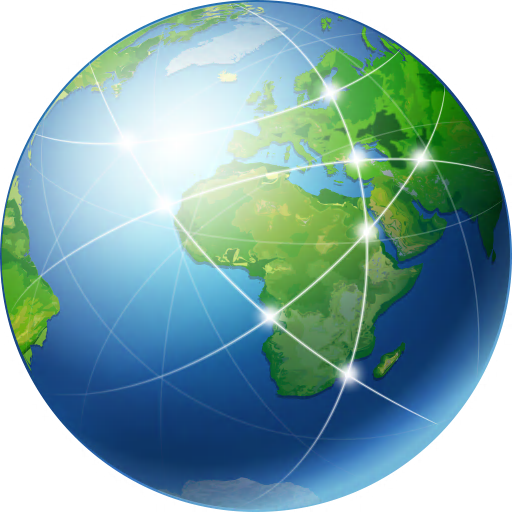 Geography
Geography

 Geography
Geography
 *World's Most Livable Cities
*World's Most Livable Cities

 History
History
 Austria
Austria
 Silk road
Silk road

 Cities founded by the Romans
Cities founded by the Romans

 World Heritage
World Heritage

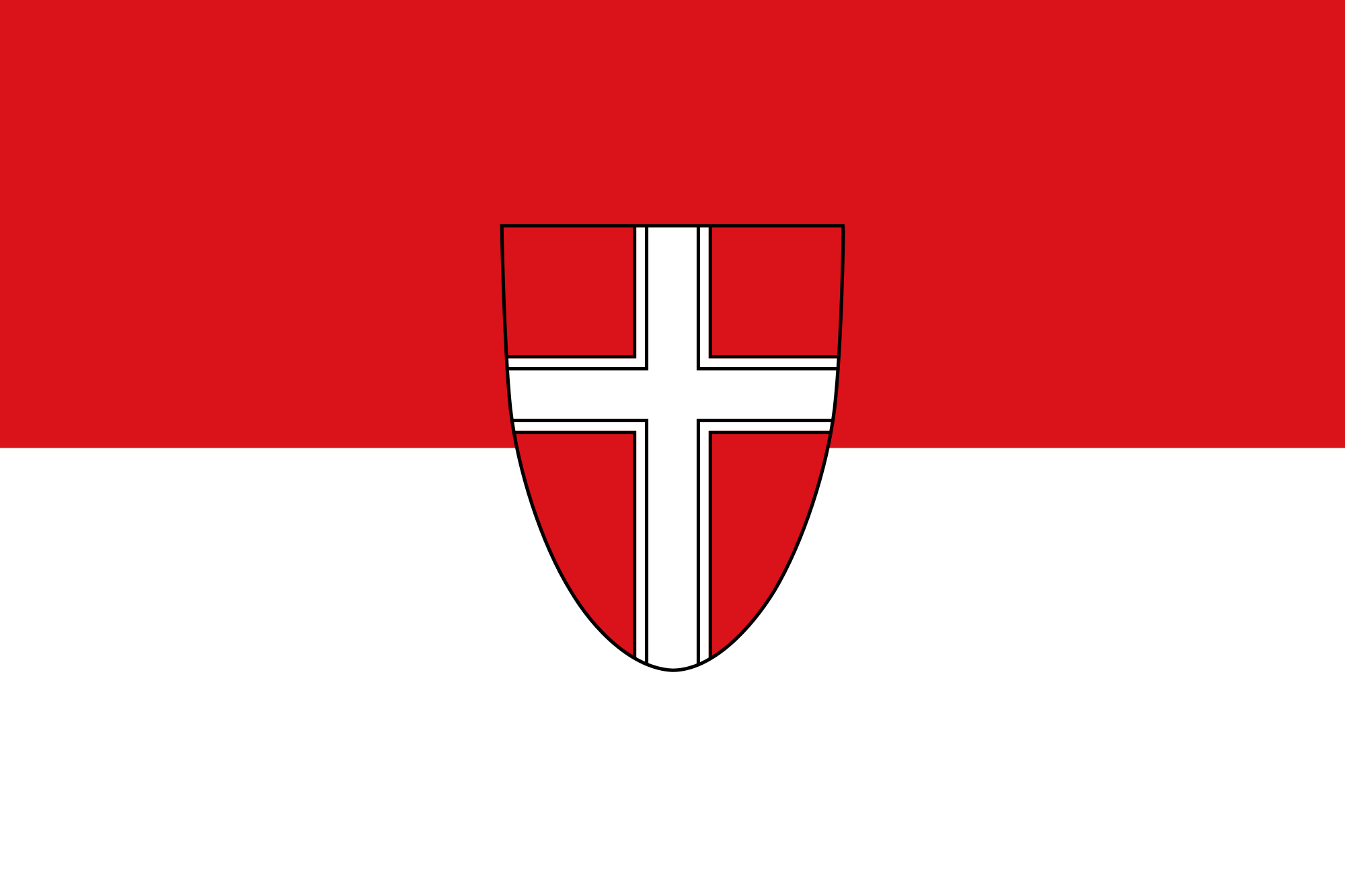 Vienna
Vienna
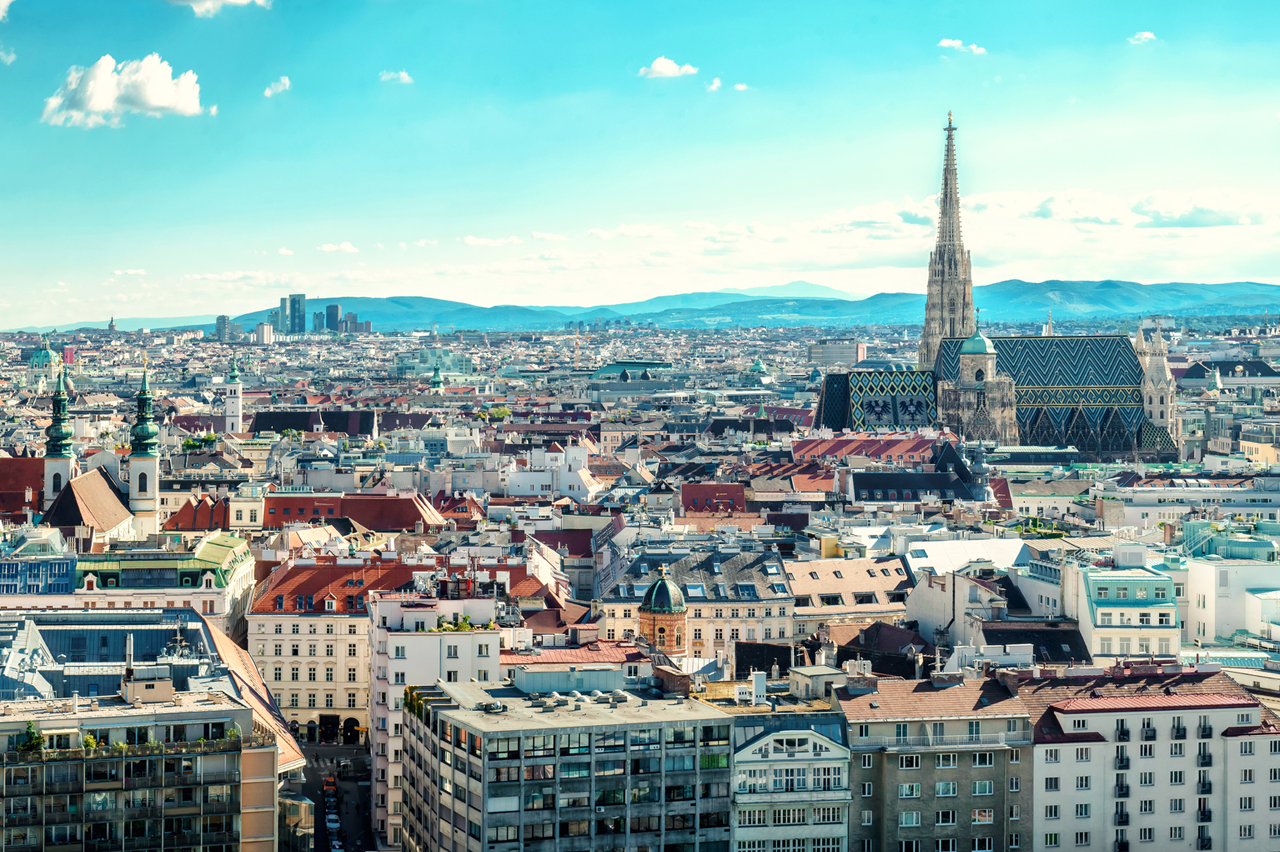
Wien  [viːn] ist die Bundeshauptstadt von Österreich und zugleich eines der neun österreichischen Bundesländer. Mit über 1,8 Millionen Einwohnern ist das an der Donau gelegene Wien die bevölkerungsreichste Großstadt Österreichs, die zweitgrößte im deutschen Sprachraum sowie die sechstgrößte Stadt der Europäischen Union.[10] Im Großraum Wien leben etwa 2,8 Millionen Menschen – das entspricht rund einem Drittel der österreichischen Gesamtbevölkerung.
[viːn] ist die Bundeshauptstadt von Österreich und zugleich eines der neun österreichischen Bundesländer. Mit über 1,8 Millionen Einwohnern ist das an der Donau gelegene Wien die bevölkerungsreichste Großstadt Österreichs, die zweitgrößte im deutschen Sprachraum sowie die sechstgrößte Stadt der Europäischen Union.[10] Im Großraum Wien leben etwa 2,8 Millionen Menschen – das entspricht rund einem Drittel der österreichischen Gesamtbevölkerung.
Architektonisch ist Wien bis heute vor allem von den Bauwerken um die Wiener Ringstraße aus der Gründerzeit, aber auch von Barock und Jugendstil geprägt. Durch seine Rolle als kaiserliche Reichshaupt- und Residenzstadt des Kaisertums Österreich ab 1804 wurde Wien im 19. Jahrhundert zu einem kulturellen und politischen Zentrum Europas. Als fünftgrößte Stadt der Welt zählte die Stadt um das Jahr 1910 über zwei Millionen Einwohner.[11] Das historische Zentrum von Wien sowie das Schloss Schönbrunn gehören heute zum UNESCO-Weltkulturerbe. Mit jährlich rund sieben Millionen Touristen und rund 15 Millionen Gästeübernachtungen zählt Wien zu den zehn meistbesuchten Städten Europas.[12]
Bereits beim Wiener Kongress 1814/15 spielte die Stadt eine bedeutende Rolle in der internationalen Diplomatie, die sie bis in die Gegenwart beibehalten hat. So ist Wien heute als internationaler Kongress- und Tagungsort Sitz von über 30 internationalen Organisationen,[13] darunter das Erdölkartell OPEC, die internationale Atomenergiebehörde IAEO und die OSZE, und zählt damit zu den Weltstädten.[14][15] Das Büro der Vereinten Nationen in Wien (UNOV) beherbergt im Vienna International Centre (VIC) einen der vier Amtssitze der UNO, im Volksmund meist als UNO-City bezeichnet.
Zudem gilt Wien als Stadt mit sehr hoher Lebensqualität. In der internationalen Mercer-Studie 2017/2018, in der die Lebensqualität anhand von 39 Kriterien wie politische, wirtschaftliche, soziale und Umweltfaktoren in 231 Großstädten weltweit verglichen wurden, belegte Wien zum neunten Mal in Folge den ersten Rang.[16] Eine Studie der Vereinten Nationen sah Wien 2012 als wohlhabendste Stadt der Welt.[17]
奥地利首都、著名音乐城市、国际旅游胜地维也纳,位于国境东北部阿尔卑斯山 北麓多瑙河畔,座落在维也纳盆地中,蓝色的多瑙河从市区静静流过,水秀山青,风景幽雅。著名的维也纳森林从西、北、南三面环绕着城市,辽阔的东欧平原从东 面与其相对,到处郁郁葱葱,生机勃勃。登上阿尔卑斯山麓,维也纳森林波浪起伏,尽收眼底。从多瑙河盆地可以远眺喀尔巴阡山闪耀的绿色峰尖,辽阔的平原犹如 一幅特大的绿毯,碧波粼粼的多瑙河穿流其间。维也纳环境优美,景色诱人,素有“多瑙河的女神”之称。
维也纳是一座拥有1800多年历史的古老城市,公元1世纪罗马人曾在这里建立城堡,到1137年成为奥地利公园的首邑。13世纪末期,城内出现大批宏伟的哥特式建筑,15世纪以后成为罗马帝国的首都和欧洲的经济中心。18世纪,随着艺术的繁荣,维也纳作为“音乐城市”闻名遐迩。
维也纳城区占地面积415平方公里,城市人口150万,房屋顺山势而建,布局层次分明,各种风格的教堂错落其间,使这座山青水碧的城市保持着浓厚的古 老庄重色彩。维也纳从内城向外城依次展开,分为3层。内城即老城,这里街道狭窄,卵石铺路,纵横交错,两旁多为巴罗克式、哥特式和罗马式建筑,中世纪的圣 斯特凡大教堂和双塔教堂的尖塔耸立蓝天,在高层建筑不多的城区显得格外醒目。围绕内城的内环城线,宽达50米,路边生长着各种树木,两旁有博物馆、市政 厅、国会、大学和国家歌剧院等重要建筑。内环城线与外环城线之间是城市的中间层,这儿是密集的商业区和住宅区,其间也有教堂、宫殿等建筑。外环城路的南面 和东面是工业区,西面是别墅区、公园区、宫殿等,一直延伸到森林的边缘。城市北面,多瑙河紧贴内城而流,在多瑙河与多瑙河运河之间,有一片岛状地带,这里 有公园、游艺场、体育场、码头、车站等。座落在城市北面的多瑙公园,也是游人云集的地方。多瑙公园内有一座耸入云天的多瑙塔,塔高252米,塔内装有两部 快速电梯,游客只须用45秒钟便可从塔底到达塔顶。塔顶设有室内咖啡馆和室外咖啡座,从塔顶四周眺望,远方的阿尔卑斯山的英姿和多瑙河两岸的美景尽收眼 底,随着塔顶的自动旋转,40分钟内可将维也纳全城景色一览无余。这里既有繁华都市景色,又有山林田园风光,游人常常会情不自禁地赞叹道:“美啊!维也 纳。”(Quelle:http://eur.bytravel.cn/v/39/)
维也纳(德语:Wien;英语:Vienna)是奥地利共和国的首都,也是该国最大都市,同时是奥地利九个联州之一。维也纳是奥地利的首要型都市,有着 172.3 万人口[5](若包含都会区则约 240 万人[4],将近奥地利人口的三分之一),并且是奥地利政治、经济、文化中心,该市人口数在欧盟城市中名列第七。二十世纪初,维也纳是世界上最大的德语都市,在第一次世界大战中奥匈帝国瓦解前,该市有 2 百万居民,时至今日,维也纳仍是德语区第二大都市,仅次于柏林。维也纳拥有许多重要的国际组织,包含联合国以及 OPEC 。城市坐落于奥地利东部,紧邻捷克、斯洛伐克和匈牙利边界,这些地区紧密相连,形成欧洲中部地区。如果加上布拉提斯拉瓦,维也纳就是个拥有 3 百万居民的大都会区。2001 年维也纳市中心古城区被指定为联合国世界遗产。2017 年 7 月它被移至濒危世界遗产的名录中。
维也纳除了因为丰富的音乐历史遗产而被称作“音乐之都”,也因为它是世界第一个心理治疗师西格蒙德·佛洛伊德的家乡而被称作“梦之都”。该城市最早是凯尔特人和罗马人的定居点,随后逐渐转变为中世纪及巴洛克时期的都市,接着成为奥匈帝国的首都。众所周知,从古典主义时代至 20 世纪初期,维也纳是具有领导地位的的欧洲音乐中心。维也纳历史中心有着丰富的建筑群,包含巴洛克式的城堡和花园、19 世纪末期环城大道上雄伟的建筑物、雕像以及公园。
维也纳也以高品质的生活著称。在 2005 年的研究中,经济学人智库在 127 个全球都市中,将维也纳选为世界最佳宜居城市第一名,与温哥华及旧金山同列。2011 到 2015 年之间,名列第二,仅次于墨尔本。2018 年,维也纳取代墨尔本,再次成为第一。连续八年(2009 年至 2016 年),人力资源顾问公司美世将维也纳列为年度生活质素调查的第一名。以此为基础,Monocle 的 2015 年生活品质调查,在世界最佳 25 个城市中将维也纳列为第二。
2012 及 2013 年,联合国人居署将维也纳列为世界最繁荣的都市。2007 及 2008 年,该城市在创新文化名列世界第一,并且在 2014 年的创新城市指数中从 256 个城市中拿到第六名,该指数分析 162 项指标,内容涵盖三大领域:文化、基础设施和市场。维也纳定期举办城市规划会议,而该城市本身也经常被城市规划者用作案例研究。
2005 年至 2010 年间,维也纳是世界上国际会议和大会的首选城市。维也纳每年吸引超过 680 万游客。
ウィーン[2](標準独: Wien〈ヴィーン〉、バイエルン・オーストリア語: Wean〈ヴェアン〉、仏: Vienne〈ヴィエンヌ〉、英: Vienna〈ヴィエナ〉)は、オーストリアの首都。2017年1月1日時点の人口は186万7582人。都市単独で一つの連邦州であり、ヨーロッパ有数の世界都市である。位置は、北緯48度12分5秒、東経16度22分38秒。第一次世界大戦まではオーストリア=ハンガリー帝国の首都としてドイツを除く中東欧の大部分に君臨し、さらに19世紀後半まではドイツ連邦や神聖ローマ帝国を通じて形式上はドイツ民族全体の帝都でもあった。クラシック音楽が盛んで過去にモーツァルトやベートーヴェン、シューベルトなど、多くの作曲家が活躍したことから「音楽の都」・「楽都」とも呼ばれる[3]。
ローマ帝国の宿営地ウィンドボナ (Vindobona) をその起源とし、かつてヨーロッパの数か国を支配したハプスブルク家のオーストリア帝国の首都であった。マリア・テレジア女帝時代に栄えた市街は、フランツ・ヨーゼフ1世の治下で整備された。リングと呼ばれる環状道路は、ウィーンの近代化を実現するために、19世紀の後半にかつて旧市街を囲んでいた堀を埋め立てて造られたものである。シュテファン寺院(シュテファン大聖堂)や旧市街をふくむ歴史地区は、「ウィーン歴史地区」の名称で2001年にユネスコの世界遺産に登録された。ここには旧王宮であるホーフブルク宮殿(現在は大統領官邸や博物館、国立図書館などとして使用)・ウィーン国立歌劇場・ブルク劇場・自然史博物館・美術史博物館、南駅に近いベルヴェデーレ宮殿などが含まれる。
ウィーンは、そもそもの成り立ちが2つの道が交差するところに生まれた町であった。ドナウ川に沿ってヨーロッパを東西に横切る道と、バルト海とイタリアを結ぶ南北の道(「琥珀街道」)である。そこはゲルマン系、スラヴ系、マジャール系、ラテン系のそれぞれの居住域の接点にあたり、歴史的にみても、上述のように、紀元前5世紀以降ケルト人の居住する小村であったところにローマ帝国の北の拠点が建設されたのが起源であった。オスマン帝国の隆盛時にはヨーロッパからみてアジアへの入り口にもあたっており、伝統的にも多彩な民族性を集約する都市として栄えた。
その地理上の位置は、かつて共産圏に属した東ドイツのベルリンや東欧スラヴ民族の国家チェコのプラハよりも東であり、第二次世界大戦後の冷戦時代にあっても、国際政治上微妙な位置にあった。
また、都心から南南西方面に離れた場所には、かつてウィーン会議の舞台となった世界遺産のシェーンブルン宮殿がある。これは、レオポルト1世が狩猟用の別荘として建てたものを、マリア・テレジアが離宮として完成させたものである。
現在のウィーンは、国際機関本部の集積地ともなっており、日本政府も在ウィーン国際機関日本政府代表部を置いている。ウィーンに本部を置いている機関は次の通り。
Vienna (/viˈɛnə/ ( listen);[10][11] German: Wien, pronounced [viːn] (
listen);[10][11] German: Wien, pronounced [viːn] ( listen)) is the federal capital and largest city of Austria, and one of the nine states of Austria. Vienna is Austria's primary city, with a population of about 1.8 million[1] (2.6 million within the metropolitan area,[4] nearly one third of Austria's population), and its cultural, economic, and political centre. It is the 7th-largest city by population within city limits in the European Union. Until the beginning of the 20th century, it was the largest German-speaking city in the world, and before the splitting of the Austro-Hungarian Empire in World War I, the city had 2 million inhabitants.[12] Today, it has the second largest number of German speakers after Berlin.[13][14] Vienna is host to many major international organizations, including the United Nations and OPEC. The city is located in the eastern part of Austria and is close to the borders of the Czech Republic, Slovakia, and Hungary. These regions work together in a European Centrope border region. Along with nearby Bratislava, Vienna forms a metropolitan region with 3 million inhabitants.[citation needed] In 2001, the city centre was designated a UNESCO World Heritage Site. In July 2017 it was moved to the list of World Heritage in Danger.[15]
listen)) is the federal capital and largest city of Austria, and one of the nine states of Austria. Vienna is Austria's primary city, with a population of about 1.8 million[1] (2.6 million within the metropolitan area,[4] nearly one third of Austria's population), and its cultural, economic, and political centre. It is the 7th-largest city by population within city limits in the European Union. Until the beginning of the 20th century, it was the largest German-speaking city in the world, and before the splitting of the Austro-Hungarian Empire in World War I, the city had 2 million inhabitants.[12] Today, it has the second largest number of German speakers after Berlin.[13][14] Vienna is host to many major international organizations, including the United Nations and OPEC. The city is located in the eastern part of Austria and is close to the borders of the Czech Republic, Slovakia, and Hungary. These regions work together in a European Centrope border region. Along with nearby Bratislava, Vienna forms a metropolitan region with 3 million inhabitants.[citation needed] In 2001, the city centre was designated a UNESCO World Heritage Site. In July 2017 it was moved to the list of World Heritage in Danger.[15]
Apart from being regarded as the City of Music[16] because of its musical legacy, Vienna is also said to be "The City of Dreams" because it was home to the world's first psychotherapist – Sigmund Freud.[17] The city's roots lie in early Celtic and Roman settlements that transformed into a Medieval and Baroque city, and then the capital of the Austro-Hungarian Empire. It is well known for having played an essential role as a leading European music centre, from the great age of Viennese Classicism through the early part of the 20th century. The historic centre of Vienna is rich in architectural ensembles, including Baroque castles and gardens, and the late-19th-century Ringstraße lined with grand buildings, monuments and parks.[18]
Vienna is known for its high quality of life. In a 2005 study of 127 world cities, the Economist Intelligence Unit ranked the city first (in a tie with Vancouver and San Francisco) for the world's most liveable cities. Between 2011 and 2015, Vienna was ranked second, behind Melbourne.[19][20][21][22][23] In 2018, it replaced Melbourne as the number one spot.[24] For eight consecutive years (2009–2016), the human-resource-consulting firm Mercer ranked Vienna first in its annual "Quality of Living" survey of hundreds of cities around the world, a title the city still held in 2016.[25][26][27][28][29][30][31] Monocle's 2015 "Quality of Life Survey" ranked Vienna second on a list of the top 25 cities in the world "to make a base within."[32][33][34][35][36]
The UN-Habitat classified Vienna as the most prosperous city in the world in 2012/2013.[37] The city was ranked 1st globally for its culture of innovation in 2007 and 2008, and sixth globally (out of 256 cities) in the 2014 Innovation Cities Index, which analyzed 162 indicators in covering three areas: culture, infrastructure, and markets.[38][39][40] Vienna regularly hosts urban planning conferences and is often used as a case study by urban planners.[41]
Between 2005 and 2010, Vienna was the world's number-one destination for international congresses and conventions.[42] It attracts over 6.8 million tourists a year.[43]
Vienne (prononcé : /vjɛn/ ; en allemand : Wien [viːn] Écouter ; en bavarois : Wean ; en hongrois : Bécs) est la capitale et la plus grande ville de l'Autriche ; elle est aussi l'un des neuf Länder (État fédéré) du pays (en allemand : Bundesland Wien).
La ville est située dans l'est du pays et traversée par le Danube (Donau). Capitale du duché puis archiduché d'Autriche, elle fut de fait celle du monde germanique durant le règne de la maison de Habsbourg (devenue en 1745 la maison de Habsbourg-Lorraine) sur le Saint-Empire romain germanique (1273-1291, 1298-1308, 1438-1806) puis présida la Confédération germanique (1815-1866). Elle fut en même temps celle de l'empire d'Autriche (1804–1867) puis de l'Autriche-Hongrie (1867-1918). Elle a été le point de départ de la crise bancaire de mai 1873. Depuis plusieurs années, elle figure dans les premières places de nombreux classements internationaux récompensant la qualité de vie des métropoles. Par exemple, la ville est en tête du classement selon l'indice Mercer évaluant le coût de la vie et la qualité de vie de 221 villes dans le monde1,2.
Peuplée d'environ 1,8 million d'habitants3, Vienne est le principal centre culturel, politique et économique de l'Autriche. Jusqu'au début du XXe siècle, elle est la plus grande ville germanophone au monde. Elle est aujourd'hui deuxième derrière Berlin.
Vienne est un important centre politique international, notamment en raison de la neutralité autrichienne, puisqu'y siègent l'OSCE, l'OPEP et diverses agences de l'ONU, comme l'Agence internationale de l'énergie atomique, l'Office des Nations unies contre la drogue et le crime ou l'ONUDI. En 1958, Vienne partage avec La Haye le prix de l'Europe4. Par ailleurs, la ville a été le lieu de signature d'un grand nombre de conventions et traités internationaux. Entre 2005 et 2010, Vienne a été la première destination mondiale pour les congrès et conventions internationales.
Surnommée la « Ville des rêves » parce que l'inventeur de la psychanalyse, Sigmund Freud, y résida, ou encore la « Ville de la musique », en raison de l'influence considérable que la ville a eue dans le domaine de la musique, notamment à travers le classicisme viennois, Vienne accueille environ 3,7 millions de touristes chaque année. Grâce à sa riche histoire, elle bénéficie d'un patrimoine culturel et architectural remarquable. Depuis 2001, le centre historique de Vienne est classé au patrimoine mondial de l'UNESCO5.
Viena (en alemán: Wien AFI:  [viːn] (?·i)) es una ciudad austriaca en Europa Central situada a orillas del Danubio, en el valle de los Bosques de Viena, al pie de las primeras estribaciones de los Alpes. Es la capital de Austria y uno de sus nueve estados federados (Bundesland Wien).
[viːn] (?·i)) es una ciudad austriaca en Europa Central situada a orillas del Danubio, en el valle de los Bosques de Viena, al pie de las primeras estribaciones de los Alpes. Es la capital de Austria y uno de sus nueve estados federados (Bundesland Wien).
Está rodeada por el Estado federado de Baja Austria. Viena es la mayor ciudad, centro cultural y político de Austria. Además es la segunda ciudad más poblada de Europa Central (tras Berlín) y la décima ciudad en población de la Unión Europea. Su población supera el 1.800.000 de habitantes (2017) y su área metropolitana cuenta con 2,4 millones, población similar a la que tenía la ciudad en 1914. El idioma oficial es el alemán y se habla en una de sus variantes bávaras.
La ciudad tiene una larga historia, ya que es una de las más antiguas capitales de Europa, por lo que cuenta con un importante patrimonio artístico. Durante el siglo XIX fue una de las grandes capitales musicales del mundo y a principios del siglo XX meca de la filosofía y el debate político de Occidente, así como uno de los principales centros culturales mundiales.
Ве́на (нем. Wien [ˈviːn], бав. Wean, лат. Vindobona и Metropolis civitas Viennensium) — федеральная столица Австрии и одновременно одна из девяти федеральных земель Австрии, расположенная внутри другой земли, Нижней Австрии. Расположена в восточной части страны. Население Вены составляет 1 867 582 чел. (2017-01-01)[1]; вместе с пригородами — около 2,6 млн (более 25 % населения Австрии); таким образом, Вена является самым крупным по населению городом Австрии, занимая седьмое место среди самых крупных городов Европейского союза и второе место среди немецкоязычных городов после Берлина. Культурный, экономический и политический центр Австрии.
Вена является третьим городом-резиденцией ООН после Нью-Йорка и Женевы. Венский международный центр (так называемый UNO-City) включает в себя МАГАТЭ, УНП ООН, организации ООН по промышленному развитию и др. В Вене находятся штаб-квартиры таких международных организаций, как ОПЕК и ОБСЕ.
В течение многих столетий Вена являлась городом-резиденцией Габсбургов, а во времена их правления и столицей Священной Римской империи германской нации, превратившись в культурный и политический центр Европы. В 1910 году в Вене проживало два миллиона человек, она занимала четвёртое место среди крупнейших городов мира, уступая лишь Лондону, Нью-Йорку и Парижу. После Первой мировой войны, повлёкшей за собой окончательный развал империи, население Вены сократилось почти на четверть и расти перестало.
Старый город Вены и дворец Шёнбрунн в декабре 2001 года были внесены в список Всемирного наследия ЮНЕСКО.
Согласно результатам международного исследования агентства Mercer, опубликованного в мае 2012 года, в котором сравнивалось качество жизни в 221 городе, Вена пятый раз подряд заняла первое место в мире по качеству жизни[3]

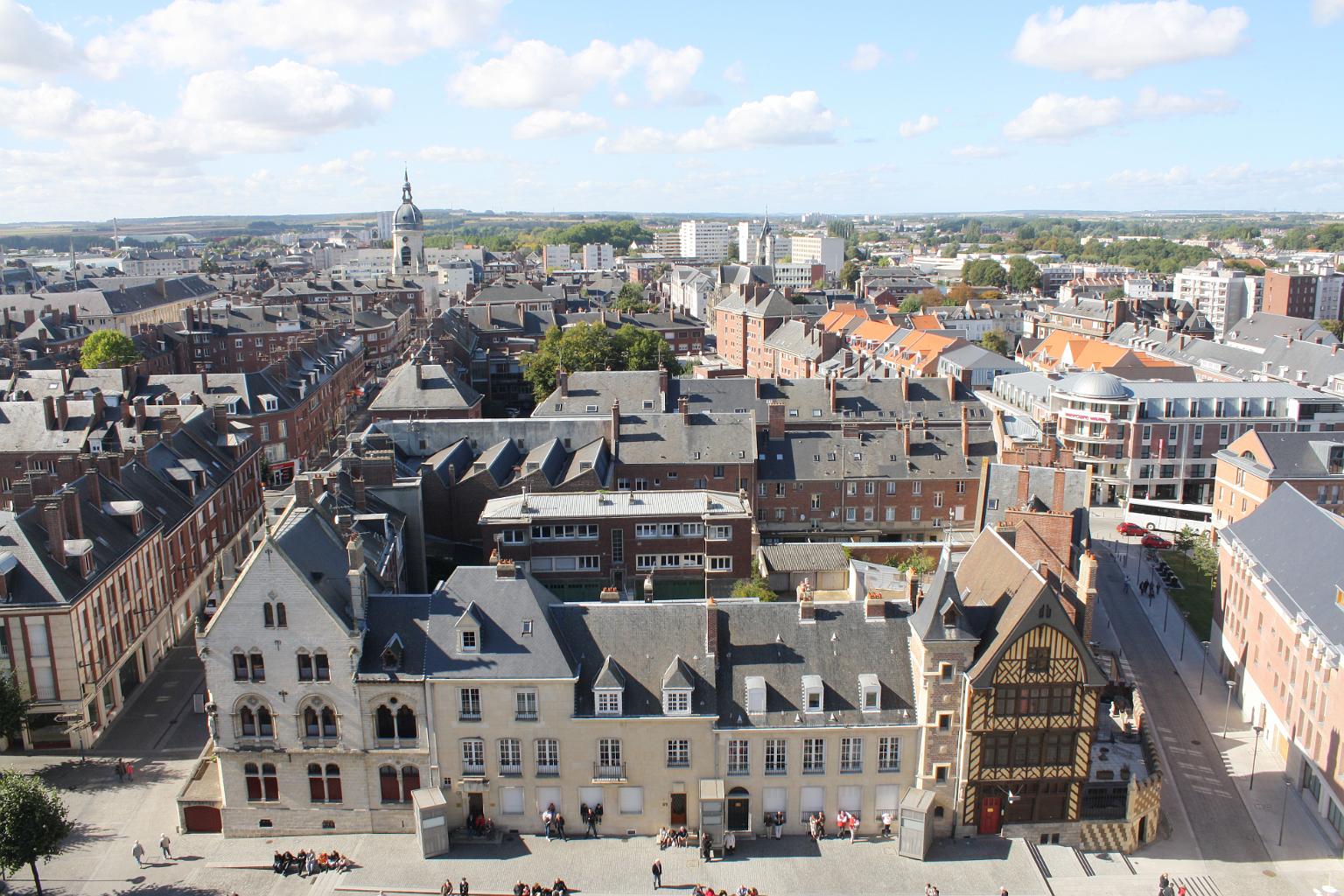

 Architecture
Architecture
 Eurovision Song Contest,ESC
Eurovision Song Contest,ESC

 History
History

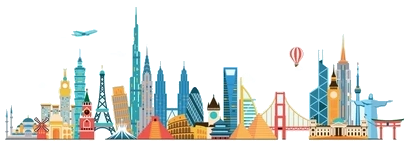 International cities
International cities
 European city
European city

 International cities
International cities
 *European Capital of Culture
*European Capital of Culture

 Medieval cities in Europe
Medieval cities in Europe
 Silk road
Silk road
 Turkey
Turkey

 Cities founded by the Romans
Cities founded by the Romans

 World Heritage
World Heritage


Istanbul (türkisch İstanbul, von griechisch εἰς τὴν πόλιν, eis tḕn pólin, „in die Stadt“: siehe unten), früher Konstantinopel, ist die bevölkerungsreichste Stadt der Türkei und deren Zentrum für Kultur, Handel, Finanzen und Medien. Mit rund 14,4 Millionen Einwohnern nahm die Metropolregion 2016 den 15.[5] Platz unter den größten Metropolregionen der Welt ein. Mit jährlich knapp zwölf Millionen Touristen aus dem Ausland ist Istanbul überdies die Stadt mit der achtgrößten Besucherzahl der Welt.[6] Die Stadt liegt am Nordufer des Marmarameeres auf beiden Seiten des Bosporus, also sowohl im europäischen Thrakien als auch im asiatischen Anatolien. Aufgrund ihrer weltweit einzigartigen Transitlage zwischen zwei Kontinenten und zwei Meeresgebieten, dem Schwarzen und dem Mittelmeer, verzeichnet sie einen bedeutenden Schiffsverkehr und verfügt über zwei große Flughäfen sowie zwei zentrale Kopf- und zahlreiche Fernbusbahnhöfe. Das Projekt Marmaray verbindet beide Hälften der Stadt per Eisenbahn und künftig die Kopfbahnhöfe an den Eisenbahnverkehr des jeweils anderen Kontinents. Istanbul ist daher einer der wichtigsten Knotenpunkte für Verkehr und Logistik auf internationaler wie nationaler Ebene.
Im Jahr 660 v. Chr. unter dem Namen Byzantion gegründet, kann die Stadt auf eine 2600-jährige Geschichte zurückblicken. Fast 1600 Jahre lang diente sie nacheinander dem Römischen, dem Byzantinischen und dem Osmanischen Reich als Hauptstadt. Als Sitz des ökumenischen Patriarchen und – bis 1924 – des osmanischen Kalifats war Istanbul zudem jahrhundertelang ein bedeutendes Zentrum des orthodoxen Christentums und des sunnitischen Islams.
Das Stadtbild ist von Bauten der griechisch-römischen Antike, des mittelalterlichen Byzanz sowie der neuzeitlichen und modernen Türkei geprägt. Paläste gehören ebenso dazu wie zahlreiche Moscheen, Cemevleri, Kirchen und Synagogen. Aufgrund ihrer Einzigartigkeit wurde die historische Altstadt von der UNESCO zum Weltkulturerbe erklärt. 2010 war Istanbul Kulturhauptstadt Europas.
伊斯坦布尔(土耳其语:İstanbul [isˈtanbuɫ] ![]() 聆听)是土耳其最大城市,亦是该国的经济、文化和历史中心。它坐落于土耳其西北部的博斯普鲁斯海峡之滨,位于马尔马拉海和黑海之间,横跨欧亚大陆,经济和历史中心位于欧洲一侧,有三分之一人口居住于亚洲一侧[3]。其人口达到1440万,为全欧洲最大的城市群,亦是中东最大和全球第六大城市[2][4]。伊斯坦布尔全市辖区面积5,343平方千米(2,063平方英里),其覆盖范围同伊斯坦布尔省相同,亦是该省的行政中心[c]。亦是世界上唯一横跨两大洲的城市。
聆听)是土耳其最大城市,亦是该国的经济、文化和历史中心。它坐落于土耳其西北部的博斯普鲁斯海峡之滨,位于马尔马拉海和黑海之间,横跨欧亚大陆,经济和历史中心位于欧洲一侧,有三分之一人口居住于亚洲一侧[3]。其人口达到1440万,为全欧洲最大的城市群,亦是中东最大和全球第六大城市[2][4]。伊斯坦布尔全市辖区面积5,343平方千米(2,063平方英里),其覆盖范围同伊斯坦布尔省相同,亦是该省的行政中心[c]。亦是世界上唯一横跨两大洲的城市。
公元前660年左右,该市以“拜占庭”之名建立于萨拉基里奥角,并在此后逐渐发展为历史上最为重要的城市之一。公元330年该市重建为君士坦丁堡([Κωνσταντινούπολις Konstantinoúpolis] 错误:{{lang-xx}}:文本有斜体标记(帮助);拉丁语:Constantinopolis)或新罗马([Νέα Ῥώμη, Nea Romē] 错误:{{lang-xx}}:文本有斜体标记(帮助);拉丁语:Nova Roma),并在此后的近十六个世纪内先后成为罗马帝国(330年–1204年及1261年–1453年)、拉丁帝国(1204年–1261年)和奥斯曼帝国(1453年–1922年)的帝国首都[5]。在罗马和拜占庭帝国时代,它对基督教的发展起到了重要的作用,而在1453年奥斯曼帝国征服该城之后,它成为了伊斯兰教的中心和奥斯曼帝国哈里发的驻地[6]。
伊斯坦布尔是古丝绸之路的途经地[7],也是欧洲和中东的铁路网络之间、黑海和地中海间海路的必经之地,使得伊斯坦布尔的战略地位十分重要,由此也哺育了兼收并蓄的人口和文化,虽然在1923年共和国成立之后这一状况略不如前。在战间期伊斯坦布尔 未能成为新首都,受到忽视,但此后其影响力逐步恢复。自1950年代以来,该市的人口已翻了十倍,来自安那托利亚各地的人口涌入,城市的界限也为此逐渐扩张[8][9]。20世纪末艺术节开始得到兴办,而随着基础设施的改善,复杂的交通网络也由此建立起来。
2012年,在当选欧洲文化之都两年之后,近1160万外国游客造访伊斯坦布尔 ,使其成为世界第五受欢迎的旅游目的地[10]。该市最重要的景点仍是其历史城区,部分被列为联合国教科文组织世界遗产,而位于贝伊奥卢区的天然港金角湾则是其文化和娱乐的中心。伊斯坦布尔还被认为是一个全球城市[11],亦是全球发展速度最快的都市经济区之一[12]。诸多土耳其公司及媒体将总部设于此,全市国内生产总值超过全国的四分之一[13]。伊斯坦布尔希望借助其复苏和快速扩张的契机,在二十年内五次申请举办夏季奥林匹克运动会[14]。
イスタンブール(トルコ語: İstanbul [isˈtanbul]、英語: Istanbul [ˌɪstænˈbuːl]、ラテン語: Constantinopolis コーンスタンティーノポリス、ギリシア語: Κωνσταντινούπολις コーンスタンティヌーポリス /現代ギリシア語 Κωνσταντινούπολι コンスタンディヌーポリ)は、トルコ最大の都市であり、経済・文化・歴史の中心地。トルコ語の発音に準じて「イスタンブル」と表記される場合もある。
Istanbul (UK: /ˌɪstænˈbʊl/, /-ˈbuːl/ or US: /-stɑːn-/ or /ˈɪstənbʊl/;[6][7][8] Turkish: İstanbul [isˈtanbuɫ] ( listen)), historically known as Byzantium and Constantinople, is the most populous city in Turkey and the country's economic, cultural, and historic center. Istanbul is a transcontinental city in Eurasia, straddling the Bosporus strait (which separates Europe and Asia) between the Sea of Marmara and the Black Sea. Its commercial and historical center lies on the European side and about a third of its population lives on the Asian side.[9] The city is the administrative center of the Istanbul Metropolitan Municipality (coterminous with Istanbul Province), both hosting a population of around 15 million residents. [3] Istanbul is one of the world's most populous cities and ranks as the world's 5th-largest city proper and the largest European city. Istanbul is viewed as a bridge between the East and West.
listen)), historically known as Byzantium and Constantinople, is the most populous city in Turkey and the country's economic, cultural, and historic center. Istanbul is a transcontinental city in Eurasia, straddling the Bosporus strait (which separates Europe and Asia) between the Sea of Marmara and the Black Sea. Its commercial and historical center lies on the European side and about a third of its population lives on the Asian side.[9] The city is the administrative center of the Istanbul Metropolitan Municipality (coterminous with Istanbul Province), both hosting a population of around 15 million residents. [3] Istanbul is one of the world's most populous cities and ranks as the world's 5th-largest city proper and the largest European city. Istanbul is viewed as a bridge between the East and West.
Founded under the name of Byzantion (Βυζάντιον) on the Sarayburnu promontory around 660 BCE, the city grew in size and influence, having become one of the most important cities in history. After its reestablishment as Constantinople in 330 CE, it served as an imperial capital for almost 16 centuries, during the Roman/Byzantine (330–1204 and 1261–1453), the Latin (1204–1261), and the Ottoman (1453–1922) empires.[10] It was instrumental in the advancement of Christianity during Roman and Byzantine times, before the Ottomans conquered the city in 1453 CE and transformed it into an Islamic stronghold and the seat of the Ottoman Caliphate.[11]
Istanbul's strategic position on the historic Silk Road,[12] rail networks to Europe and the Middle East, and the only sea route between the Black Sea and the Mediterranean have produced a cosmopolitan populace. While Ankara was chosen instead as the new Turkish capital after the Turkish War of Independence, the city has maintained its prominence in geopolitical and cultural affairs. The population of the city has increased tenfold since the 1950s, as migrants from across Anatolia have moved in and city limits have expanded to accommodate them.[13][14] Arts, music, film, and cultural festivals were established towards the end of the 20th century and continue to be hosted by the city today. Infrastructure improvements have produced a complex transportation network in the city.
Approximately 12.56 million foreign visitors arrived in Istanbul in 2015, five years after it was named a European Capital of Culture, making the city the world's fifth most popular tourist destination.[15] The city's biggest attraction is its historic center, partially listed as a UNESCO World Heritage Site, and its cultural and entertainment hub can be found across the city's natural harbor, the Golden Horn, in the Beyoğlu district. Considered a global city,[16] Istanbul has one of the fastest-growing metropolitan economies in the world.[17] It hosts the headquarters of many Turkish companies and media outlets and accounts for more than a quarter of the country's gross domestic product.[18] Hoping to capitalize on its revitalization and rapid expansion, Istanbul has bid for the Summer Olympics five times in twenty years.[19]
Istanbul ou Istamboul2 (en turc : İstanbul3), appelé officiellement jusqu'en 1930 et historiquement Constantinople, est la plus grande ville et métropole de Turquie et la préfecture de la province homonyme, dont elle occupe environ 50 % de la superficie mais plus de 97 % de la population. Quatre zones historiques de la ville sont inscrites sur la liste du patrimoine mondial de l'Unesco depuis 1985. Istanbul est le principal centre financier, commercial et industriel de la Turquie mais aussi la capitale culturelle du pays. La population de l'ensemble de l'agglomération stambouliote est évaluée à 15 millions d'habitants en 20144,5 ce qui en fait l'une des plus grandes mégapoles du monde. Forte d'un héritage culturel et historique important, la ville cosmopolite est un haut lieu du tourisme.
Située de part et d’autre du détroit du Bosphore — donc à cheval sur deux continents, l’Europe et l’Asie — Istanbul est généralement considérée comme européenne parce que la ville historique est située sur la rive occidentale du détroit.
Elle est la plus grande agglomération du pays avec plus de 15 millions d'habitants et l'une des plus grandes agglomérations d'Europe. Elle constitue aussi le principal pôle économique de la Turquie.
Appelée officiellement İstanbul depuis le 28 mars 1930, elle a porté d'autres noms durant son histoire (encore parfois utilisés selon les contextes) notamment : « Byzance », au moment de sa fondation ; puis « Constantinople » (à partir du 11 mai 330 en l'honneur de l'empereur romain Constantin Ier).
Appelée aussi la « Deuxième Rome », Istanbul appartint d'abord à la Thrace, puis à l’Empire romain dont elle fut la seconde capitale après 395 (devenu l'Empire romain d'orient et appelé au XVIe siècle « byzantin » par Hieronymus Wolf6), ensuite à l’Empire ottoman depuis le 29 mai 1453, et enfin, juste après la chute de celui-ci le 10 août 1920, à la République de Turquie, dont elle fut capitale jusqu'au 13 octobre 1923, lorsque cette fonction administrative fut transférée à Ankara.
Les anciens noms de la ville, Byzance puis Constantinople, témoignent de cette longue histoire. Seules quelques autres grandes villes ont eu trois noms au cours de leur histoire. Du point de vue historique, il est possible de considérer qu'avec Athènes et Rome, Constantinople (Istanbul) est l'une des trois capitales antiques les plus importantes.
Les habitants de la Byzance antique étaient appelés Byzantiotes et ceux de Constantinople, les Constantinopolitains ou les Politains. Par contre, aucun citoyen de l'Empire romain d'orient ne s'est jamais appelé Byzantin : ils se définissaient comme « Romains » et lorsqu'ils sont devenus sujets de l'Empire ottoman, celui-ci les a organisés dans le milliyet de Rum. Les habitants d’Istanbul sont les Stambouliotes ou les Istanbuliotes7.
La « Sublime Porte » ou simplement « la Porte » étaient les expressions qui désignaient le pouvoir politique ottoman s'il s'agissait du gouvernement ou « le Palais » s'il s'agissait du sultan.
Istanbul (in turco İstanbul, pronuncia [istan'buɫ]), storicamente conosciuta come Bisanzio (in greco antico: Βυζάντιον, Byzàntion; in latino: Byzantium), Costantinopoli (in latino: Constantinopolis; in greco antico: Κωνσταντινούπολις, Konstantinoupolis; in turco ottomano قسطنطينيه Kostantîniyye) o Nuova Roma (in latino: Nova Roma; in greco antico: Νέα Ῥώμη, Néa Rṓmē), è la città capoluogo della provincia omonima e il principale centro industriale, finanziario e culturale della Turchia.
Con una popolazione di circa 15 000 000 di abitanti,[2] Istanbul (considerando però anche i quartieri asiatici) è il secondo centro municipale più popoloso d'Europa (sesto nel mondo) davanti a Londra e dietro Mosca.
Istanbul è una megalopoli situata nel nord-ovest del paese, la quale si estende lungo lo stretto del Bosforo, alla cui estremità meridionale si situa il porto naturale del Corno d'Oro, e lungo la sponda settentrionale del Mar di Marmara. La città, divisa dal Bosforo, si estende sia in Europa (Tracia) sia in Asia (Anatolia), risultando l'unica metropoli al mondo appartenente a due continenti. Istanbul è considerata una città globale.
Nel corso della sua lunga storia, la città (chiamata Bisanzio fino al 330, poi Costantinopoli sino al 1453, Istanbul o Costantinopoli sino al 1930, e da allora in poi solo Istanbul) è stata la capitale:
- dell'Impero romano (330-395);
- dell'Impero bizantino (395-1204 e 1261-1453);
- dell'Impero latino (1204-1261);
- dell'Impero ottomano (1453-1922).
Conosciuta anche con l'appellativo di "seconda Roma", è stata fino alla conquista ottomana nel 1453 una tra le più grandi città della cristianità, divenendo in seguito per quasi cinquecento anni la capitale di uno dei più grandi imperi della storia e crocevia di culture. Quando è stata proclamata la Repubblica di Turchia, il 29 ottobre 1923, Istanbul fu considerata ormai troppo vulnerabile, potendo finire sotto tiro delle marine militari che avevano dimostrato bellamente di poter violare gli stretti durante la Prima guerra mondiale, e così Ankara, che in precedenza aveva servito come quartier generale del movimento cittadino turco durante la guerra d'indipendenza turca, è stata scelta come capitale del nuovo Stato turco.
Nel 2010 Istanbul è stata una delle capitali europee della cultura.[3] Sin dal 1985 le aree storiche di Istanbul fanno parte della lista UNESCO dei patrimoni dell'umanità.[4]
Estambul (en turco, İstanbul, [isˈtanbuɫ]), conocida históricamente como Bizancio y, después, Constantinopla, es la ciudad más poblada de Turquía y el centro histórico, cultural y económico del país. Fue sucesivamente capital de Estados soberanos como el Imperio romano, el Imperio romano de Oriente, el Imperio latino y el Imperio otomano hasta 1923 cuando se terminó en la Ocupación de Constantinopla. Es una ciudad transcontinental, ubicada en el estrecho del Bósforo, que separa Europa y Asia, entre el mar de Mármara y el Mar Negro. Dos tercios de la población viven en la parte europea de la ciudad.2 Con más de 15 millones de habitantes, Estambul es una de las ciudades más pobladas del mundo.3 La mayor parte de la población es de religión musulmana, si bien existen minorías de cristianos (68 000) y de judíos (22 000).
Fue fundada con el nombre de Bizancio (Βυζάντιον) en el promontorio de Sarayburnu alrededor del 660 a. C., y su tamaño e influencia crecieron, y se ha convertido en una de las ciudades más importantes de la historia universal. Desde su refundación bajo el nombre de Constantinopla en 330 d. C., Estambul ha sido la capital del Imperio romano-Imperio bizantino (330-1204 y 1261-1453), del Imperio latino (1204-1261) y del Imperio otomano (1453-1922).4 Fue una de las ciudades en las que floreció el primer cristianismo. Durante el período bizantino, la ciudad estaba habitada por cristianos. Tras la caída de Constantinopla ante los otomanos en 1453, la ciudad se fue transformando en una ciudad musulmana y en la sede del califato otomano.5 Tras la caída
Es también la capital administrativa de la provincia de Estambul (de la que cubre 27 distritos)6 en la llamada Rumelia o Tracia oriental. El nombre de İstanbul, usado de forma no oficial desde hacía varios siglos en el país, fue oficializado el 28 de marzo de 1930 en sustitución de Constantinopla. Aunque la capital política y administrativa es Ankara, Estambul sigue siendo una ciudad que tiene un papel fundamental en la industria, el comercio y la cultura de Turquía. Alberga más de una docena de universidades. Es sede del Patriarcado Ecuménico de Constantinopla, cabeza de la Iglesia ortodoxa.
Con el final de la I Guerra Mundial y la derrota del Imperio otomano, el territorio europeo otomano quedó reducido a unas decenas de kilómetros en torno a Estambul. El 13 de octubre de 1923,7 antes de la promulgación del estado turco sucesor, la República de Turquía, el parlamento turco trasladó legalmente la capitalidad a Ankara.
Las zonas históricas de Estambul fueron declaradas Patrimonio de la Humanidad por la Unesco en el año 1985, por sus importantes monumentos y restos históricos.8
Стамбу́л (тур. İstanbul — [isˈtanbuɫ]), также известный как Константинóполь, и в славянских источниках как Царьгрáд — крупнейший город Турции, главный торговый, промышленный и культурный центр, основной порт страны. Расположен на берегах пролива Босфор, разделяющего его на европейскую (основную) и азиатскую части, соединённые мостами и тоннелями. По численности населения первый город в Европе (при учёте населения, проживающего как в собственно европейской, так и в азиатской частях). Бывшая столица Римской, Византийской, Латинской и Османской империй.
В VII веке до нашей эры колонистами, в основном, выходцами из греческого города Мегары, был основан город Византий[3][4][5]. В 330 году римский император Константин I Великий перенёс столицу Римской империи в Византий, которому было дано название Новый Рим, однако это наименование не прижилось, и вскоре столицу стали называть Константинополем — городом Константина[6][7][8][9]. В XIII веке арабы использовали название Истинполин, которое восходит к греческой фразе греч. εἰς τὴν Πόλι(ν) («ис тин пόли(н)», «ис тим бόли(н)») — в город(е)[10]. Отсюда могло произойти современное название[11][12]. Согласно другой версии, оно происходит от Исламбул (город ислама), что, однако, вызывает сомнения в связи с существованием вышеупомянутого названия Истинполин, созвучного современному, ещё до падения Константинополя в 1453 г.[13] Фирман 1760/1 г., который на практике так и не был реализован, в качестве официального устанавливал встречавшееся уже в документах XV в. название Исламбол, то есть наполненный исламом[14][15]. С конца XVIII в. в европейских странах, в том числе в России, в употребление входит искажённая форма: Стамбул. Формально город после его захвата турками и переноса туда столицы империи не переименовывался: для турок он как был, так и оставался Истанбулом (Стамбулом), а для греков — Константинополем.
До 1930 года официальное, международно принятое название города: Константино́поль (с греч. — «Город Константина»; тур. Konstantiniyye), каковое признавалось Великим национальным собранием Турции: подписи его полномочных представителей стоят под Лозаннским договором, текст которого использует исключительно топоним Константинополь[16]. В официальных русских текстах Константинопольского договора 1724 года, Парижского мирного договора 1856 года, Сан-Стефанского мирного договора 1878 года и Берлинского трактата 1878 года используется принятый тогда в России топоним Константинополь. Другое историческое название, до сих пор используемое в титуле Константинопольского патриарха: Но́вый Рим[17] или Второй Рим (

York ist eine Stadt im Norden von England am River Ouse nahe der Mündung des River Foss. York war bereits in der Römerzeit ein bedeutendes Zentrum und später die Residenzstadt der Grafschaft Yorkshire. Heute ist die City of York eine selbständige Verwaltungseinheit (Unitary Authority), die nur zu zeremoniellen Anlässen zur Grafschaft North Yorkshire gehört.
约克(英语:York,当地 ![]() i/ˈjɔːrk/),位于英国英格兰约克郡-亨伯区域北约克郡,英格兰的城市、单一管理区,位于乌斯河畔、利兹东北偏东,起初为盖尔人的居点,后为罗马人、盎格鲁人、丹麦人和诺曼人占领。中世纪该城是繁荣的羊毛市场和教育中心,其大主教地位仅次于坎特伯雷大主教。
i/ˈjɔːrk/),位于英国英格兰约克郡-亨伯区域北约克郡,英格兰的城市、单一管理区,位于乌斯河畔、利兹东北偏东,起初为盖尔人的居点,后为罗马人、盎格鲁人、丹麦人和诺曼人占领。中世纪该城是繁荣的羊毛市场和教育中心,其大主教地位仅次于坎特伯雷大主教。
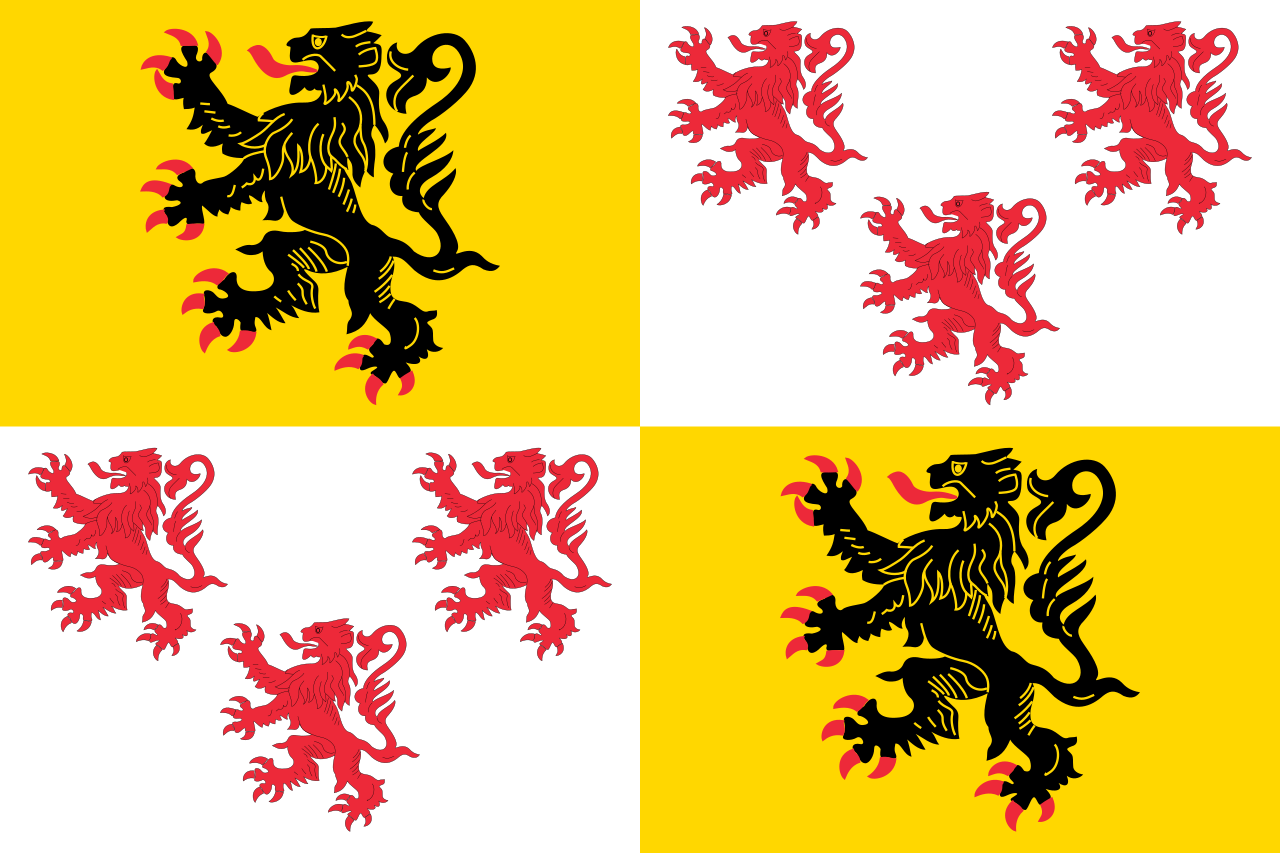 Hauts-de-France
Hauts-de-France
